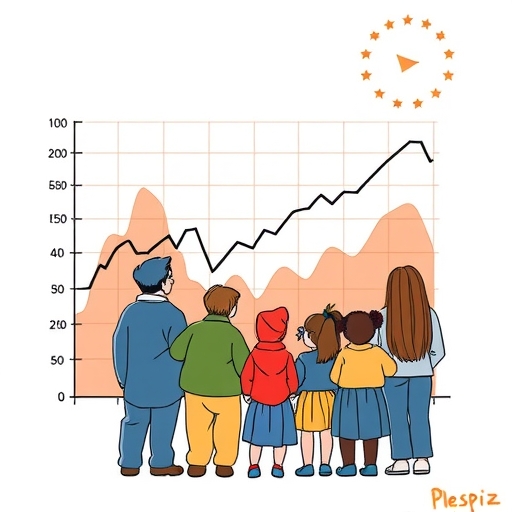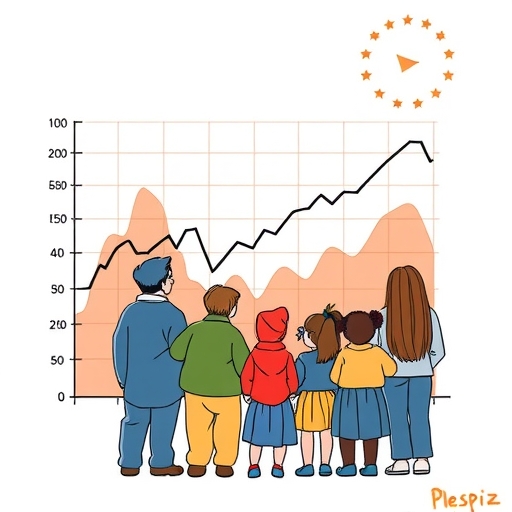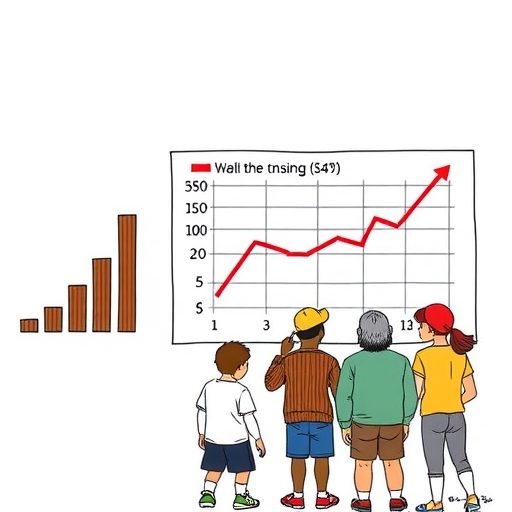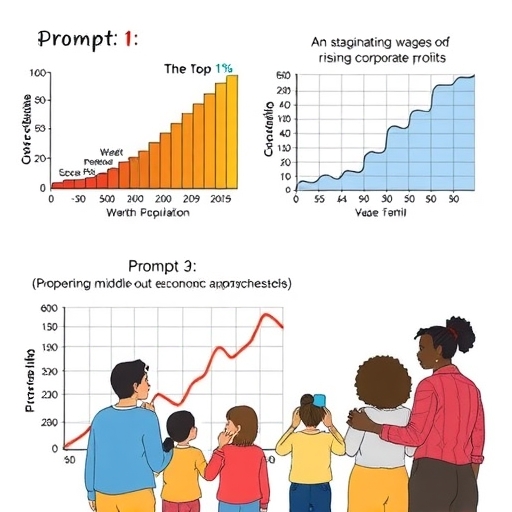
What is Trickle Down Economics: Exploring Its Impact on Global Wealth Dynamics
Table of Contents
ToggleUnderstanding Trickle-Down Economics: A Deep Dive for Informed Investors
As investors, we’re constantly seeking clarity amidst the complex currents of the global economy. We analyze company fundamentals, scrutinize market trends, and interpret technical signals. But sometimes, the most powerful forces shaping our investment landscape aren’t found on a price chart or in a balance sheet; they originate from broad economic theories and the fiscal policies governments enact based upon them.
One such theory that has profoundly influenced policy over the past few decades is **trickle-down economics**. You’ve likely heard the term, often debated heatedly in political circles. But what exactly is it? And, more importantly for us, what does the empirical evidence, spanning decades, tell us about its real-world impact? Has it delivered on its promises, or has it created a different reality altogether? Let’s explore this crucial concept, drawing solely from rigorous analysis and data, to understand how it has shaped the economic environment in which we invest.
Key considerations regarding trickle-down economics include:
- The central promise of tax cuts for the wealthy is economic growth.
- The correlation between tax cuts and job creation remains weak according to various studies.
- Recent analyses indicate that wealth concentration has increased rather than decreased under trickle-down policies.

The Core Promise: Tax Cuts for Prosperity
At its heart, **trickle-down economics** is a relatively straightforward idea. The central premise is that by significantly reducing taxes and government regulations on corporations and the wealthiest individuals, you incentivize investment and stimulate economic activity at the very top of the economic ladder. The theory posits that these benefits, like water flowing downhill, will eventually “trickle down” through increased hiring, higher wages, and broader opportunities for everyone else in the economy.
Think of it like this: If wealthy individuals and corporations have more capital at their disposal because they’re paying less in taxes, they will supposedly reinvest this money into businesses, research and development, and expansion. This increased investment, in turn, should lead to job creation, boost productivity, and ultimately generate higher incomes across the workforce. The rising tide, as the saying goes, should lift all boats. This is the attractive promise of **trickle-down economics** – a simpler path to shared prosperity driven by the engines of capital accumulation at the top.
The Global Experiment Begins: Adoption in the 1980s
While the conceptual roots of favoring capital and business might stretch back further, **trickle-down economics** gained significant political traction and became a dominant force in policymaking starting in the 1980s. This period marked the beginning of what has been termed the “global neoliberal experiment,” where many countries, particularly in the West, began implementing policies aligned with this theory.
Governments enacted substantial cuts to **top marginal tax rates** for individuals and corporations. The belief was that high taxes were a disincentive to work, save, and invest, thus stifling economic growth. By lowering these rates, policymakers aimed to unleash the latent potential of the market. This policy shift wasn’t confined to one nation; it became a widespread approach influencing fiscal policy decisions across the G20 countries and beyond. It fundamentally altered the relationship between governments, businesses, and their citizens’ incomes, setting the stage for decades of real-world testing of the **trickle-down** hypothesis.

Decades of Data: Examining the Economic Impact
So, after roughly 40 to 50 years of applying these principles, what does the hard data reveal? Have the promised benefits of **trickle-down economics** materialized for the majority? Studies analyzing economic indicators across various periods and countries provide compelling insights that challenge the core assumptions of the theory.
When we examine metrics like **real GDP growth**, **median income growth**, **average hourly wage growth**, and the **unemployment rate** over these decades, the evidence is, at best, underwhelming for the **trickle-down** model. Contrary to the expectation that lower taxes at the top would ignite widespread prosperity, the data consistently shows a weak or negligible correlation between reduced taxes for the rich and corporations and positive outcomes for the broader economy. In many cases, broad economic indicators did not accelerate following tax cuts for the wealthy; instead, other trends became more pronounced.
This isn’t just theoretical debate; it’s based on empirical findings. Research from institutions like the Congressional Budget Office (CBO) and studies published in reputable journals analyzing long-term fiscal policy impacts provide the statistical foundation for this assessment. They look at periods before and after major tax reforms, comparing economic performance, and the results challenge the fundamental “trickle-down” mechanism. It appears that the expected flow of benefits to the middle and lower classes simply hasn’t occurred on the scale or with the consistency that the theory predicted.
Where Did the Wealth Go? Inequality at the Top
If the benefits didn’t broadly **trickle down**, where did they accumulate? The data provides a clear answer: at the very top of the income and wealth distribution. Perhaps the most undeniable consequence of policies aligned with **trickle-down economics** has been a dramatic increase in **economic inequality** and **wealth concentration**.
Analysis shows that over the decades where **top marginal tax rates** were significantly reduced, the incomes and wealth of the richest individuals and corporations soared. The capital freed up by tax cuts for the wealthy often didn’t flow into broad-based wage increases or job creation for the middle class. Instead, a substantial portion was directed towards activities like **stock buybacks** and increased dividends, directly benefiting **shareholders** and executives, who are disproportionately found among the wealthiest percentile.
Consider the impact following a specific policy like the US **Tax Cuts and Jobs Act of 2017**. This legislation dramatically lowered the corporate tax rate and provided tax breaks for high-income individuals. What was the outcome? According to data cited in analysis, the wealth of billionaires in the US increased by a staggering $2.2 trillion *since* 2017. This surge in wealth at the absolute apex occurred concurrently with much slower growth, stagnation, or even decline in real terms for the median income and wealth of typical households. The “trickle” was less a broad river and more a gilded stream pooling at the very top, exacerbating the divide between the rich and everyone else.
The 2017 Tax Cuts: A Modern Case Study
The **Tax Cuts and Jobs Act of 2017** under President **Donald Trump** serves as a potent modern case study in the application and outcomes of **trickle-down economics**. This act was explicitly designed to lower taxes on corporations and high-income earners, with proponents arguing it would unleash business investment, create jobs, and boost wages across the board, ultimately paying for itself through accelerated economic growth.
However, post-implementation analysis, drawing upon data from various sources including the CBO and economic studies, tells a different story. While corporate profits and the wealth of the rich did see significant boosts, the promised **trickle-down** effects on the broader economy largely failed to materialize as advertised. Investment didn’t surge dramatically in ways that created widespread job booms or significant, sustained wage increases for the average worker.
| Analysis Aspect | Pre-Tax Cuts | Post-Tax Cuts |
|---|---|---|
| Corporate Profits | Increase | Significant Increase |
| Average Worker Wages | Stagnant | Little Change |
| National Debt | Moderate | Significantly Increased |
The act significantly contributed to an increase in the **national debt**, failing to “pay for itself” through revenue generated by accelerated growth, as had been claimed. This specific example, evaluated with several years of post-policy data, reinforces the broader conclusion derived from decades of history: policies centered on cutting taxes for the top, while beneficial for the wealthy, have not consistently translated into broad-based economic gains for the middle class or significantly stimulated the overall economy in the ways proponents predicted. It highlights the disconnect between the theoretical mechanism and the empirical reality.
Beyond the Numbers: Stagnant Wages and Missed Opportunities
Looking beyond aggregate economic indicators, the failure of the **trickle-down** mechanism is perhaps most keenly felt in the stagnation of **average hourly wage growth** for the majority of workers. If investment fueled by tax cuts were truly leading to increased productivity and competition for labor, we would expect to see significant upward pressure on wages across various sectors.
However, the data indicates that for large segments of the population, real wage growth has been sluggish for decades, especially when compared to the substantial increase in productivity over the same period. This suggests that the gains from economic activity and corporate success have been disproportionately captured by capital owners (shareholders) and top management, rather than being shared broadly with the workforce through higher paychecks.
This outcome represents a significant missed opportunity. A thriving **middle class** with rising incomes fuels consumer demand, supports local businesses, and builds economic resilience from the ground up – a concept central to alternative economic models we will discuss. The focus on facilitating wealth accumulation at the top, inherent in **trickle-down economics**, appears to have come at the expense of robust wage growth and economic security for the majority, limiting their ability to participate fully in and contribute to the economic engine.
The Price of Policy: National Debt and Unfulfilled Promises
Another critical dimension of evaluating **trickle-down economics** is its fiscal impact. Proponents often argue that the economic growth spurred by tax cuts will ultimately increase the tax base, leading to higher government revenues that offset the initial reduction in tax rates. This was a key argument used to support the 2017 tax cuts, suggesting they would be revenue-neutral or even reduce the **national debt** over time.
However, the empirical record, particularly the experience following major tax cuts like those in 2017, contradicts this claim. The promised surge in growth sufficient to generate offsetting revenues did not materialize. Consequently, these policies have often led to significant increases in the **national debt** and budget deficits, requiring cuts to public services (like healthcare or education) or future tax increases to manage the fiscal gap. For instance, analyses by the CBO consistently projected that the 2017 tax cuts would add trillions to the national debt over the subsequent decade.

This raises a fundamental question: is the cost of decreased government revenue, leading to potential cuts in public goods or increased future tax burdens, justified by the economic outcomes of **trickle-down economics**? Based on the evidence of limited broad growth and exacerbated inequality, many analysts and economists argue that the fiscal price paid has been substantial, while the promised widespread economic returns remain largely unfulfilled. It represents a transfer of wealth and opportunity not just between classes, but also potentially between generations, as future citizens inherit the accumulated debt.
From Economics to Power: The Link with Political Inequality
The consequences of extreme **wealth concentration** resulting from policies like **trickle-down economics** extend beyond purely economic metrics. Critics argue that this level of inequality creates a significant imbalance of power, leading to **political inequality** that can undermine democratic institutions and processes.
When a tiny fraction of the population holds a disproportionate share of a nation’s wealth, they gain immense influence over political discourse, policy decisions, and regulatory environments through lobbying, campaign finance, and control of media narratives. As economist **Guido Alfani** explores in his work, drawing on concepts like **Nicole Oresme**’s observation about the powerful acting “as gods among men,” extreme wealth grants individuals the ability to shape society according to their interests, often at the expense of the broader public good.
This isn’t merely an abstract concern. It manifests in policies that further favor the wealthy, regulations that benefit large corporations over small businesses or workers, and a political system increasingly responsive to the needs of the rich rather than the majority. For investors, understanding this link is crucial because it highlights how economic policy isn’t just about GDP numbers; it’s about the distribution of power and influence, which in turn shapes future policy directions and the stability of the economic and social environment we operate within. It suggests that unchecked economic inequality can breed political instability and policy capture, creating systemic risks that affect markets in ways traditional analysis might miss.
A Look Back: High Taxes and Historical Growth
To further evaluate the claims of **trickle-down economics**, it’s instructive to look at historical periods that operated under different fiscal philosophies. Consider the post-World War II era in the United States, from the 1940s through the 1970s. This period is often remembered for robust economic growth, declining inequality, and the significant expansion of the American **middle class**.
Interestingly, this era was characterized by significantly higher **top marginal tax rates**. The top income tax rate was often above 70%, sometimes even reaching 90%. Corporate tax rates were also considerably higher than they are today. According to the logic of **trickle-down economics**, such high rates should have stifled investment, crushed innovation, and hampered growth. Yet, the opposite occurred.
This historical evidence provides a powerful counterpoint to the central tenet of **trickle-down economics**. It suggests that high taxes on the wealthy and corporations are not inherently detrimental to broad economic growth or the creation of a strong middle class. In fact, some analysis from this period suggests a mild positive correlation between higher top tax rates and subsequent wage growth in the middle and lower parts of the income distribution. This history supports the idea that when a larger share of the economic pie goes to the government (which can then invest in infrastructure, education, and social programs) or when policies prevent excessive wealth hoarding at the top, it can correlate with shared prosperity and a stronger overall economy. It challenges the notion that low taxes for the rich are a prerequisite for national economic success.
Rethinking the Model: Middle-Out Economics and Alternatives
Given the compelling evidence that **trickle-down economics** has largely failed to deliver broad prosperity and has instead fueled inequality, economists and policymakers are increasingly discussing alternative frameworks. One prominent alternative is often referred to as “**middle-out economics**.”
Unlike **trickle-down**, which focuses on stimulating the economy from the top, **middle-out economics** proposes that true, sustainable growth is driven by strengthening the **middle class** and working families. The idea is that when the majority of the population has secure jobs, rising wages, access to education, healthcare, and opportunities for upward mobility, they spend more, save more, and invest in their communities. This broad-based demand and human capital development creates a more stable and dynamic economy from the middle outwards.
Policies aligned with **middle-out economics** often include proposals for raising the minimum wage, investing in infrastructure and education, strengthening unions, and, notably, reforming the tax system to make it more progressive. For example, President **Joe Biden** has proposed various **tax reforms** aimed at increasing taxes on corporations and the wealthiest individuals, while potentially providing tax relief for low and middle-income taxpayers. These proposals are grounded in the belief that directing resources and opportunities towards the broad base of the economy is a more effective engine for shared and sustainable growth than relying on benefits somehow flowing down from the top.
Taxing Extreme Wealth: Concepts Like Limitarianism
Building on the critique of excessive **wealth concentration**, some alternative economic thinkers go further, exploring concepts aimed at directly limiting the accumulation of extreme wealth. One such concept is “**limitarianism**,” proposed by philosopher **Ingrid Robeyns**.
Limitarianism suggests that just as there might be a poverty line below which no one should fall, there could also be a wealth ceiling – a maximum amount of private property an individual is morally or socially permitted to hold. This isn’t just about generating tax revenue; it’s a philosophical argument that extreme wealth accumulation is inherently problematic for a just and democratic society, creating the **political inequality** and disproportionate power dynamics we discussed earlier.
While **limitarianism** is a more radical concept than typical tax reform proposals, it reflects a growing recognition that simply adjusting tax rates might not be enough to address the systemic issues created by soaring wealth at the top. Discussions around concepts like a “billionaire tax” or recurring wealth taxes (distinct from income taxes) are gaining traction in some political circles, reflecting a policy shift towards directly addressing the accumulation of vast fortunes as a means to reduce inequality and potentially fund public investments. These ideas represent a fundamental departure from the core tenets of **trickle-down economics**, focusing instead on setting boundaries for wealth accumulation rather than facilitating it.
The Path Forward: Navigating the Policy Debate
As investors, understanding these different economic philosophies and the evidence supporting or refuting them is not merely an academic exercise. It provides crucial context for anticipating potential policy shifts, understanding market reactions to legislative changes, and evaluating the long-term stability and equity of the economic environment. The debate between **trickle-down economics** and alternatives like **middle-out economics** or wealth taxation is far from over.
We see this debate reflected in current political landscapes, where some advocate for further tax cuts for corporations and the wealthy, echoing **trickle-down** principles, while others push for increased taxes on the rich and corporations, coupled with investments in the middle class, aligning with **middle-out** approaches. As you follow economic news and policy discussions, recognizing the underlying theoretical frameworks at play can help you better interpret proposed legislation and understand its potential economic and social consequences.
Ultimately, decades of empirical evidence strongly suggest that the core mechanism of **trickle-down economics** – that tax cuts for the wealthy automatically lead to broad prosperity – has largely failed to materialize. Instead, these policies have significantly contributed to increased **economic inequality** and **wealth concentration**. For us as informed participants in the financial markets, this understanding is vital. It highlights that sustainable economic growth and a stable society may require policies that focus not just on the top, but on building strength and opportunity from the middle outwards, ensuring that the benefits of our collective economic activity are more equitably shared.
what is trickle down economicsFAQ
Q:What is trickle-down economics?
A:It’s an economic theory suggesting that benefits for the wealthy will eventually “trickle down” to the rest of society, promoting overall growth.
Q:Does trickle-down economics effectively reduce poverty?
A:Evidence suggests it does not significantly reduce poverty or improve the incomes of the lower and middle classes.
Q:What are alternatives to trickle-down economics?
A:Alternatives include middle-out economics, which focuses on strengthening the middle class to drive economic growth.
You may also like
Calendar
| 一 | 二 | 三 | 四 | 五 | 六 | 日 |
|---|---|---|---|---|---|---|
| 1 | 2 | 3 | 4 | 5 | 6 | 7 |
| 8 | 9 | 10 | 11 | 12 | 13 | 14 |
| 15 | 16 | 17 | 18 | 19 | 20 | 21 |
| 22 | 23 | 24 | 25 | 26 | 27 | 28 |
| 29 | 30 | 31 | ||||
發佈留言
很抱歉,必須登入網站才能發佈留言。